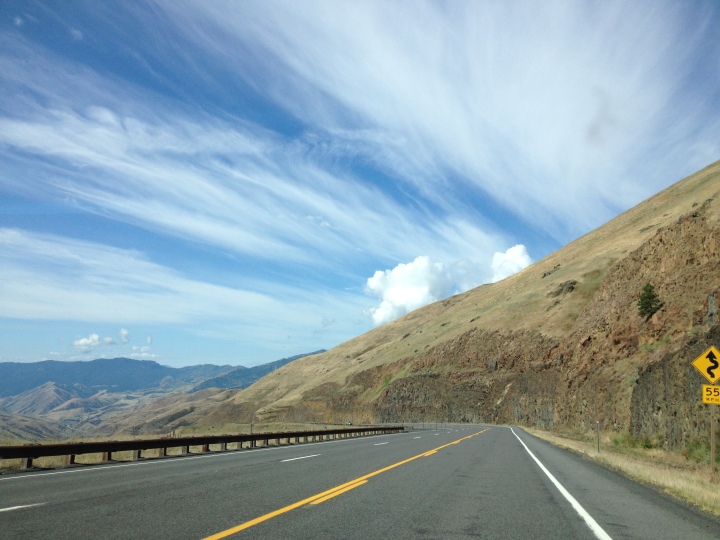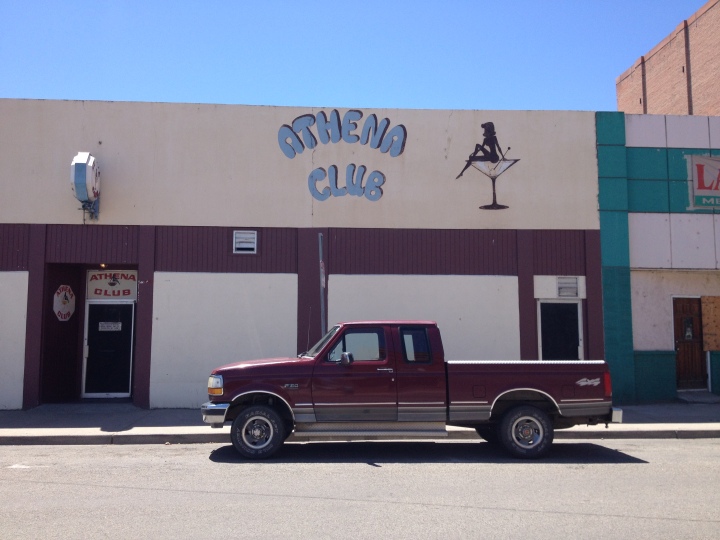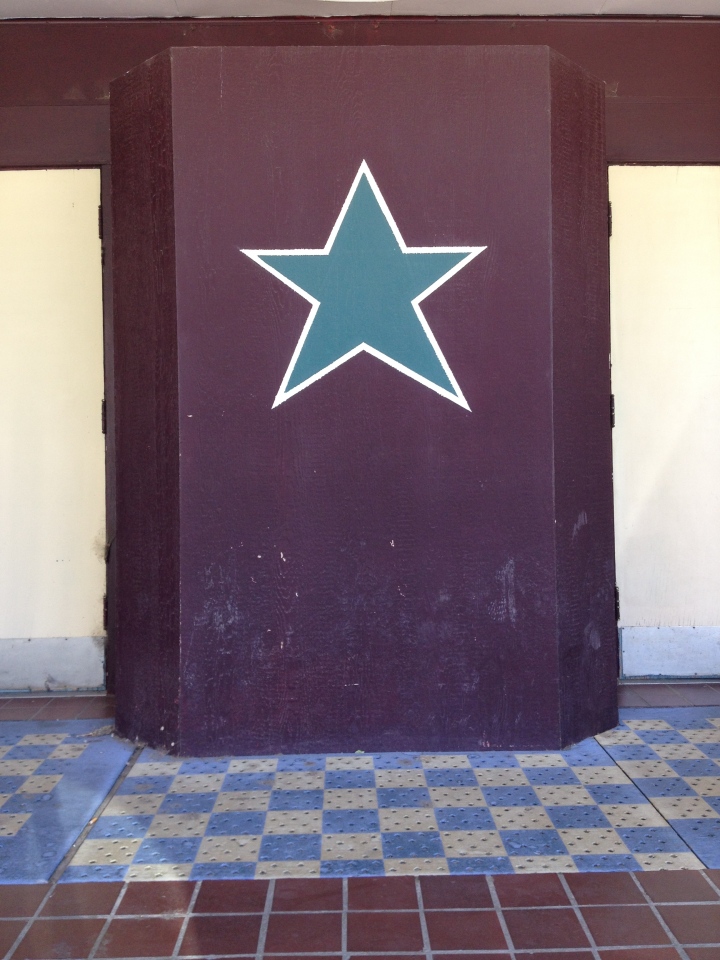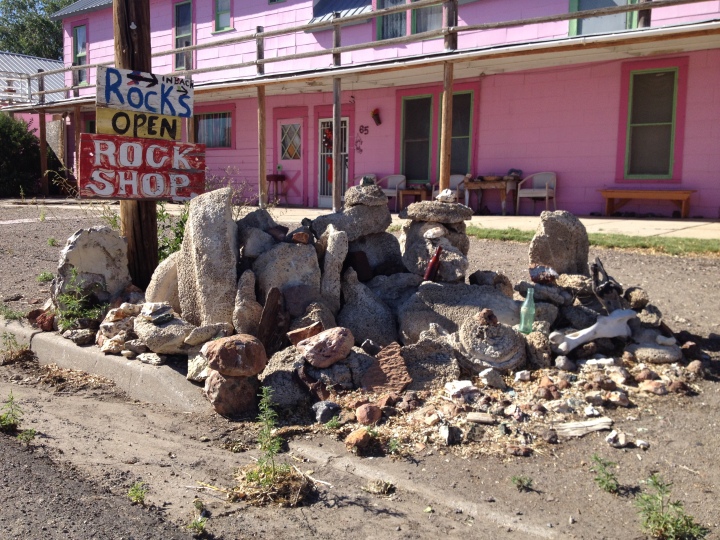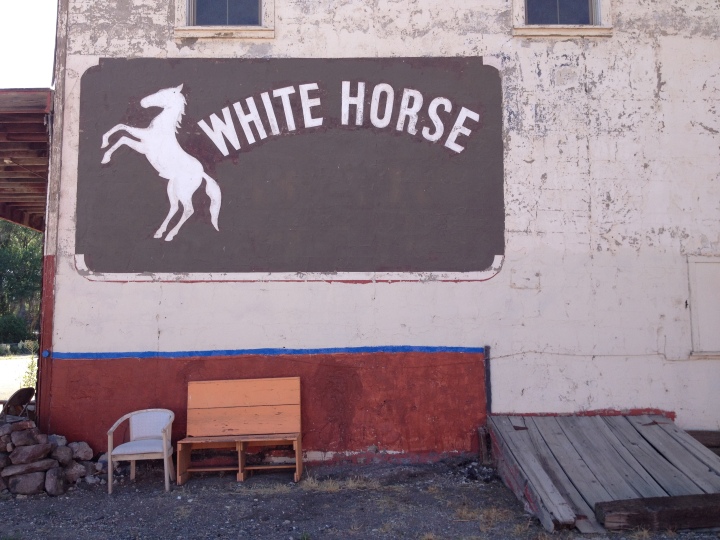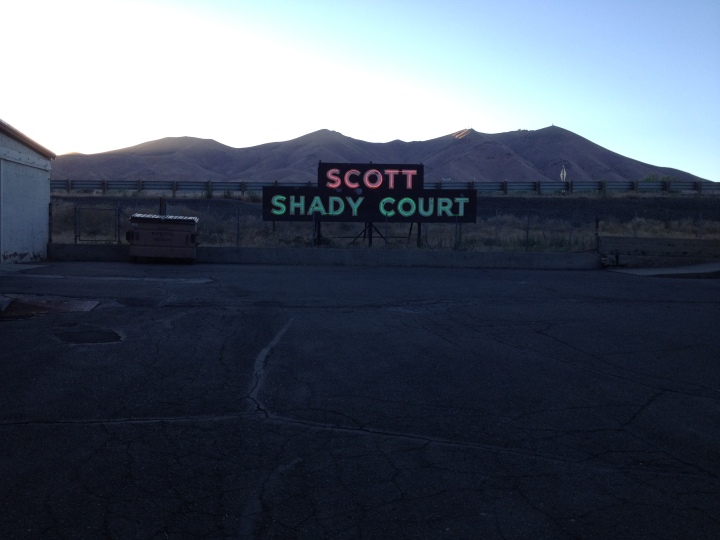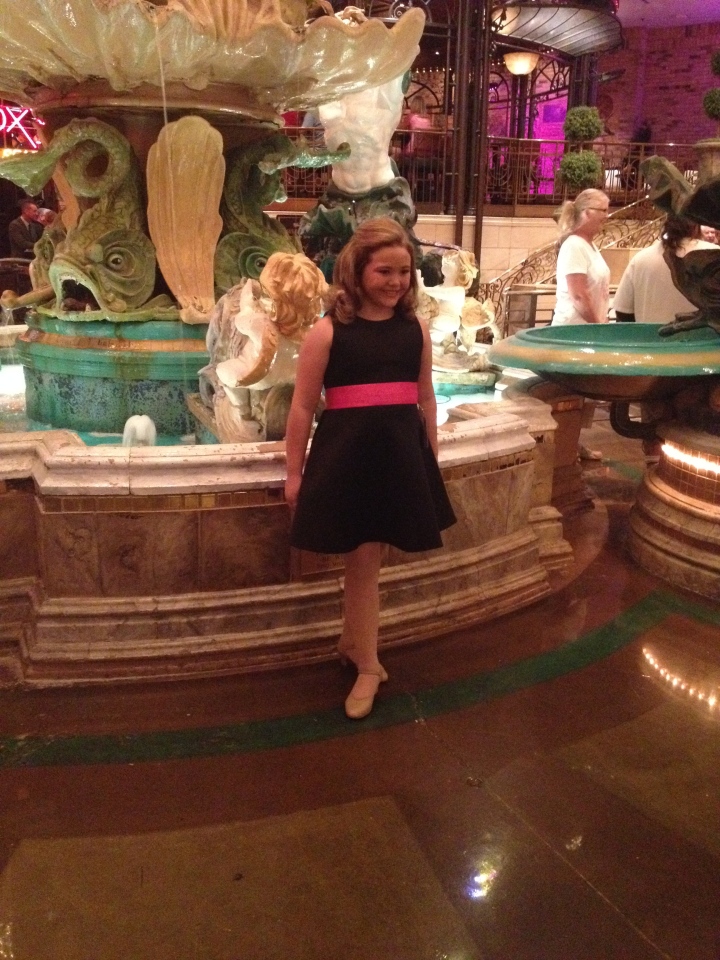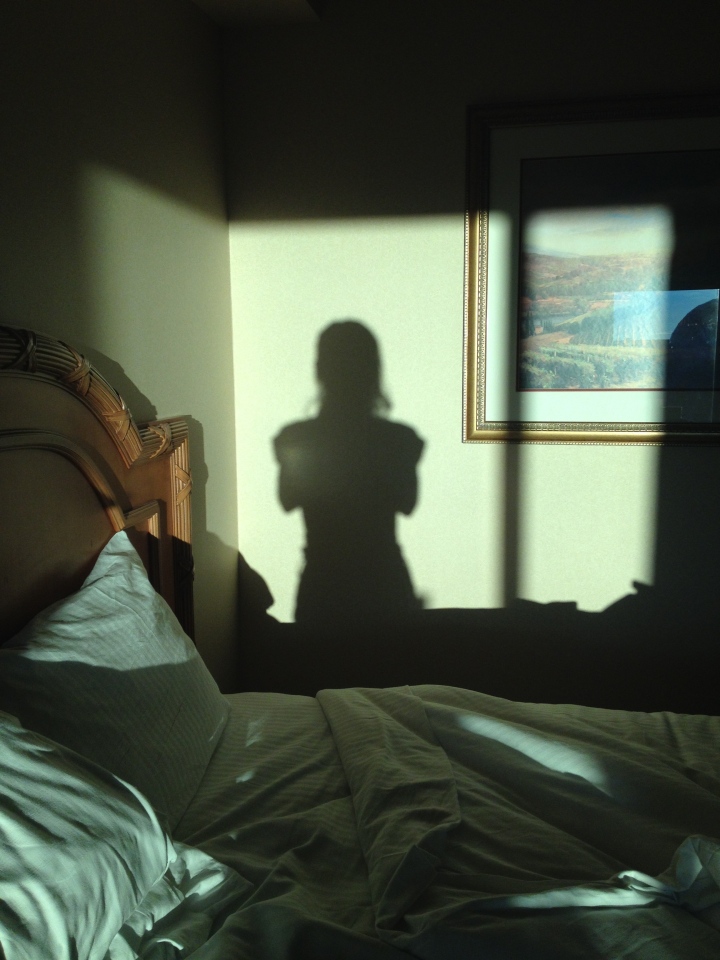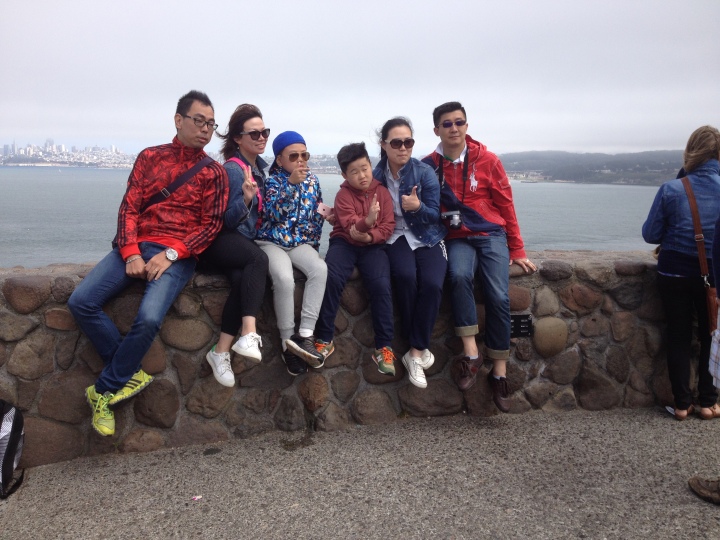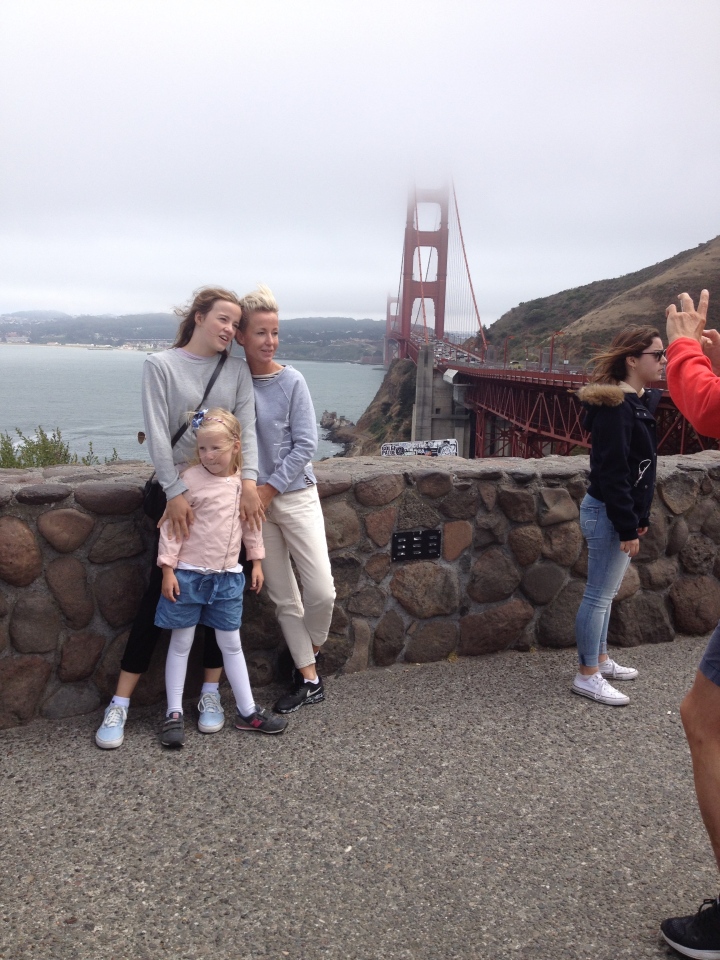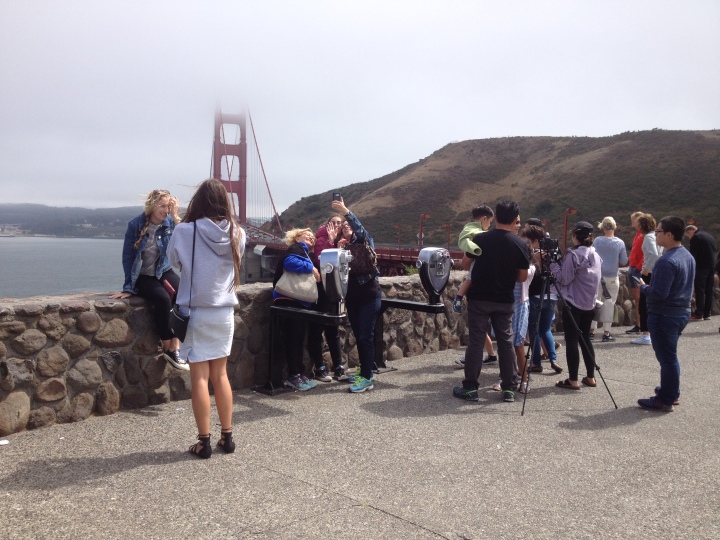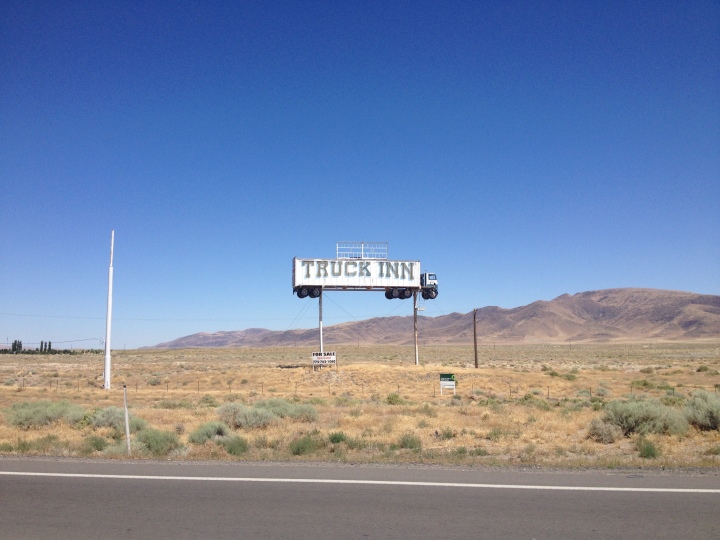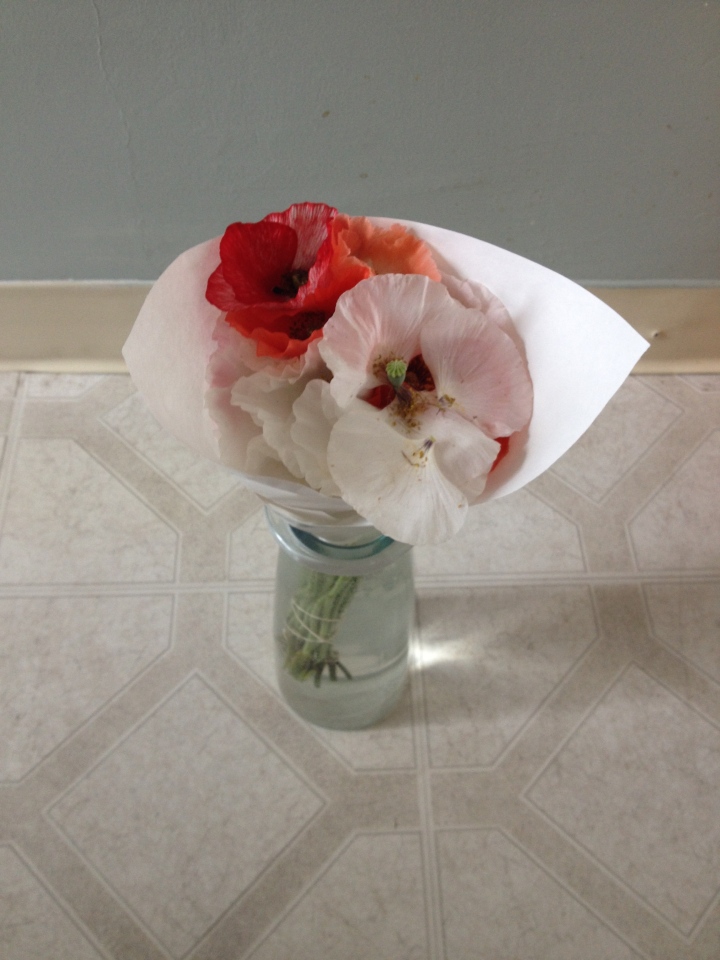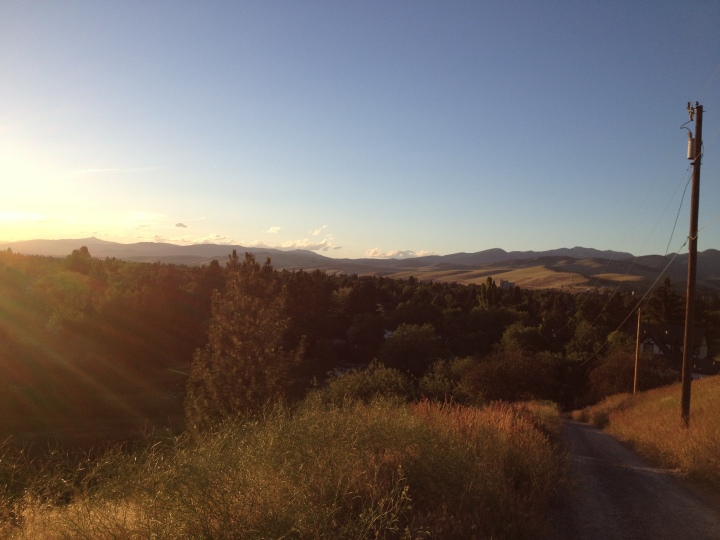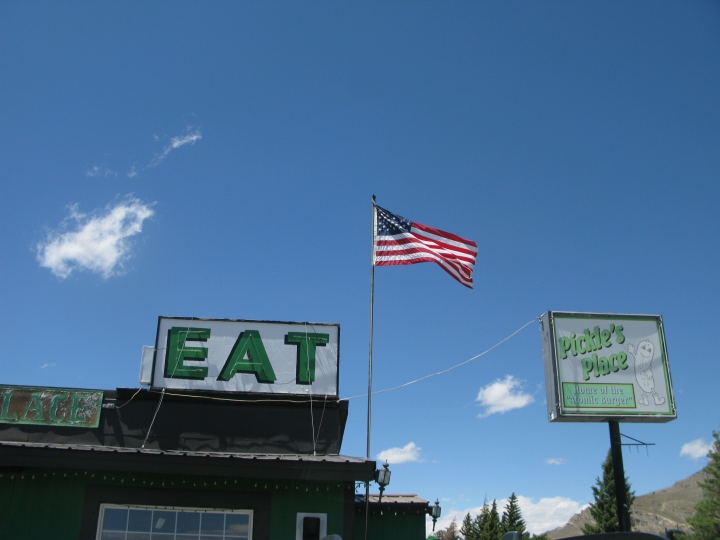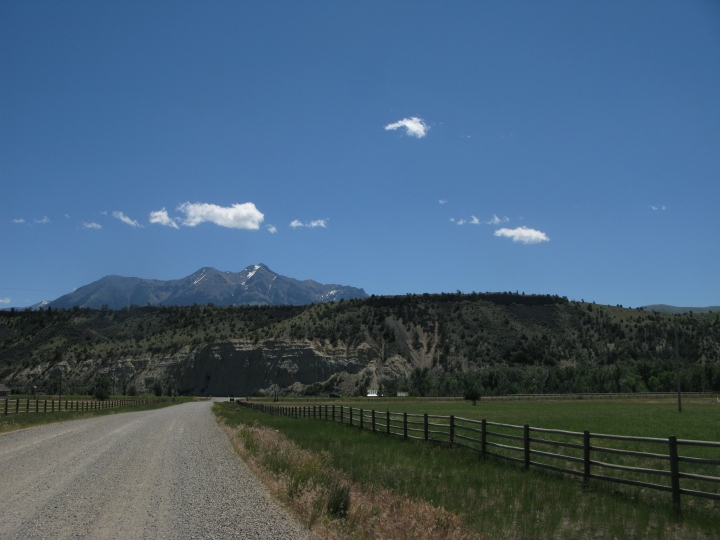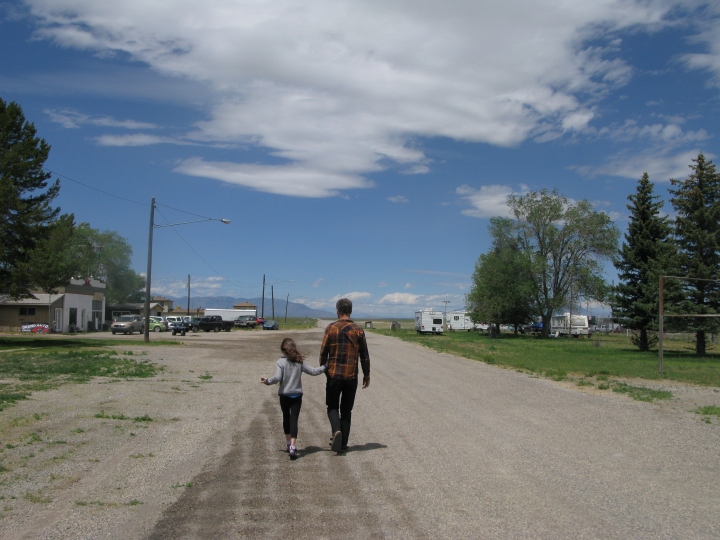
About three weeks after moving to Montana from East London urged on by a restless mid-life state of mind, I find myself waking up in a motel room in Gardiner, Montana at 4:30 a.m. on a drizzly August day. The sister of a friend of mine, the poet and naturalist Ilona Popper, picks me up and we drive for an hour along the northern range of Yellowstone National Park in the pitch black towards where she thinks a pack of wolves known as the Junction Butte Pack will be hanging out doing whatever it is wolves do.
After about an hour, we park up in the Lamar Valley behind half a dozen cars while a quarter of a mile away twenty or so Gortex-clad wolfers are planting their scopes on the crest of a hill. Ilona introduces me to ‘Rick’ who is getting out of his car. As the biological technician for the Yellowstone Wolf Project, Rick has spent more than fourteen years observing wolf behaviour and pack dynamics. He is locally famous for chalking up more than 5,000 consecutive days (‘without even one day off,’ Ilona whispers at me) watching wolves. Much of what we know about the Yellowstone packs comes from his observations.
Ilona and I scale the small hill and set up our scopes in the rain just as the sky is lightening. After observing a few bison lazily grazing, we spot what Ilona thinks is the alpha female of the pack — the leader and breeder. She is a mottled charcoal colour, very relaxed, lying on her side nonchalantly watching five wolf cubs. The cubs tussle, jump on her and run in circles. As I watch the cubs roll in the grass like puppies, I feel I am watching something forbidden. Their play seems private, intimate — something between them and the land that I have no place witnessing. I am not expecting to have an emotional response to these animals but a kind of awe begins to creep over me — the awe of the European on the Grand Tour when confronted with a waterfall or the eruption of Mount Vesuvius. It is the awe of the spectator. But then something strange happens. I begin to be able to tell them apart, to identify these cubs as individuals. ‘Look there’s the one who nips ears,’ I am saying to myself. The awe shifts from that of observer to participant. I start to feel part of this land of theirs.
Since their re-introduction to Montana in 1995, the debate still rages as to the extent of good or harm these animals effect. With wolves in Yellowstone hunting and killing prey, the elk population has been reduced, thus increasing the growth of young willow trees, and also invoking the wrath of hunters whose prime target is elk. To conservationists, however, the regrowth of trees is seen as necessary for providing food and habitat for many animals in the Park. By bringing back the apex predator, some scientists and conservationists believe that a healthier balance has been restored. The doomsayer in me who believes that ecological meddling rarely has a happy ending sees this issue as one that is so complex, with so many variables, that our limited human brains cannot fully comprehend it.
***
A month after seeing the Junction Butte Wolf Pack, I keep hearing about wolves. They are in the news a lot. They have a lot of enemies. People are angry. A quick Google affirms that a lot of Westerners see the reintroduction of wolves as an assault on their hunting rights, on their cattle, on their sense of being the top predator, on their whole way of life. It seems too easy for me, someone who has been living in a large urban centre thousands of miles from the American West for the last twenty-five years, to say that killing these predators is wrong. What do I know? There must be reasons for laying steel in the ground and making war on wolves?
Which is why I have come to Missoula’s Rocky Mountain Elk Foundation on a sunny September day. From the outside, the building is part ski chalet, part country club. I walk into the large open foyer and am greeted by what I will soon learn is a Montana specialty: taxidermy. Tons of it. Lynx, cougars, elk, bears, bighorn sheep, antelope, foxes, martens, badgers and whole dioramas populated with once living, stuffed animals chasing plastic grasshoppers and dragonflies dangling from nearly invisible fishing wire.

I follow some deep voices that lead me to the room where the wolf-trapping course is taking place. It’s carpeted in gun-metal grey and chairs have been set up in very neat rows. It looks like we might be gathering to pray. There is one other woman. We clock each other. I smile, but she makes it clear she’s not here to socialise. The men, around thirty of them, wear baseball caps or cowboy hats, and sunglasses are placed backwards on their necks — a look I associate for some reason with military personnel. Three generations head-to-toe in denim, leather boots with spurs and cowboy hats silently fill the back row. The youngest, maybe four years old, is a tiny version of the adults: same clothes, same stoic expression.
On a table at the front of the room, where we have written our names onto a sheet of paper, is an assortment of metal contraptions, pelts and skulls. If someone had told me these metal devices were medieval torture instruments, I would have believed them. But these are foothold traps designed to snap onto the limb of an animal. Conibears (which grip the entire body) and snares (which strangle the animal) are illegal in Idaho and Montana. I am madly writing this all down while a guy behind the table is talking unofficially to a few attendees who make it clear they have used a lot of these traps. They handle these clanking things with familiarity.
Then the day starts for real, and like all courses it begins with introductions. At the front of the room are Mike Thompson, a wildlife manager at Montana Fish, Wildlife and Parks (MTFWP) and Jeff Ashmead, who worked as a government trapper, gunner, and pilot in the state of Idaho. He is now a trapper for hire — the go-to guy when you are experiencing cattle and ungulate depredation at the hands of wolves. Ashmead, who looks to be in his early sixties, wears reflective shades, baseball cap, a belt holding up a pair of very tight-fitting jeans, and sports a badge on his hat and shirt emblazoned with his logo of a wolf and the acronym JAWS (Jeff Ashmead Wildlife Specialist). Thompson looks more like a history teacher. He takes us through the stack of photocopied pages we’ve all been given: Montana Department of Fish, Wildlife and Parks — Wolf Trapper Education Handbook. In 2011 it became mandatory for all trappers to take this certificate course. I sense resentment in the room expressed in the form of crossed arms, legs akimbo, and faces that seem to say, ‘Can we get this over with quick so I can get back to my traps?’
Once we are through with the rules and regulations in the handbook, Mike Thompson steps aside and Jeff Ashmead rises, slowly, making the most of his six-foot frame.
‘I don’t speak for the Wildlife Services anymore, although I worked for them for thirty plus years. I’m a rancher, father of five kids, a family man’. I could feel the room relax. He is one of them.
Jeff Ashmead explains the fallacy of Mother Nature and her ‘balancing act’. He spits those last two words out in a way that leaves no doubt about his views of natural balance. We get a brief history of wolves in Idaho and Montana. How they were hunted for their pelts throughout the 1880s, set on fire, shot, poisoned, trapped, and were extinct by the 1930s. Bison were being slaughtered in record numbers as well, and their meat was often injected with strychnine to kill anything that ate the meat. There are accounts of trappers setting up camp, shooting bison, poisoning the meat, going to sleep, and then waking in the morning to a field of dead wolves (and eagles and every other scavenger who might like a little midnight bison snack).
After grey wolves were reintroduced to Montana from Canada they remained on the endangered list. Their numbers grew until in 2011 they were delisted. The point Jeff is trying to make is that we’ve been meddling with Mother Nature since we’ve been on the planet, so the idea of preserving things in any kind of balance seems ridiculous to him. He goes on, ‘I mean what is this paradise people are trying to reach? It was never even there in the first place!’
The room is silent with what I take as agreement.
Then we are made aware that the wolf counts done by the state of Montana are inaccurate. Apparently because of the wily nature of these beasts, only a small proportion of them have actually been counted.
Fear Factor Number 1: There are way more wolves out there than you could ever possibly know.
Jeff Ashmead goes into the social structures within wolf packs and something strange happens. He anthropomorphises these animals: wolf pups start trying to find territory where they can bring their ‘ladies’ or ‘girlfriends’. Once the pups are ‘at their peak, when they’re top athletes, they take their girls off to a new territory. They’ve had enough of their dad’s iron fist.’ Ladies? Girlfriends? Athletes? Dads?
He goes on for some time about the social bonds of wolves and how these creatures differ from the many wild animals out there, like bears, who use bluff as a scare tactic. These guys don’t bluff. They kill.
Fear Factor Number 2: Wolves are deadly. Or to put it in Jeff’s words: ‘When a wolf pulls the trigger, someone dies. They play to kill.’
It is essential for any decent trapper to know how the packs function — you can’t trap an animal unless you can work out where it’s going to be. We are told that the alpha males (the pack leaders) get territorial of their alpha females (the breeder of the pack). ‘There ain’t no fornication in my group!’ he shouts out in imitation of an Alpha male.
These wolves not only have girlfriends and trigger fingers, but they fornicate. I sense a vein of sexual thrill in his words, as if killing a wolf is somehow linked to an increase in manliness.
The main reason we are all gathered here today, however, is to talk about ethics. We are taken through the variety of traps before us. Pros and cons and the price options of the differing traps, which have names like ‘Sleepy Creek #4’ and ‘Livestock Protection Company #7’. The proper care and setting of the various traps is explained carefully.
‘Whatever steps in one of these, you’re going to have to deal with. A moose, whatever. You don’t want to get a cow moose in one of these because she’s not going to leave until she’s done some tap dancing on you!’
He gets a laugh.
Jeff tells the room that it is important to weight the traps so that you don’t catch too much of the other ‘stuff’ such as ‘deer, elk, bobcats, coyotes, fishers, and martens’. Especially the last two as they are ‘sensitive species’. Fishers became extinct in Montana and were re-introduced in 1959. They are no longer considered endangered but are treated with some trepidation. Marten fur is what is known as ‘sable’ and is highly desirable. But you wouldn’t want to be seen trapping an animal that was ‘sensitive’ when you are trying to catch a wolf, as that would definitely put a dent in your ethical credentials.
‘You should lay your traplines as if your grandmother were watching you,’ Jeff tells us while wagging a finger. I glance down at the handbook open on my lap and see an Aldo Leopold quote: ‘Ethics is doing the right thing when no one else is looking, even though the wrong thing is still legal.’
It’s break time. A trapper I meet as I stand in a hallway of the Rocky Mountain Elk Foundation looking at framed photos of past donors is keen to tell me that wolves are bloodthirsty creatures who will prey on just about anything (even children apparently) and they make a point of going for the pregnant ones. That is how evil they are. There is a photo online, he tells me, showing the foetus hanging out of a dead horse. ‘Uneaten!’ the guy is smiling with what almost seems like excitement, titillation. ‘Wolves kill just for the fun of it.’ We are called back to the room for the session to resume and I tear myself away from the guy who will be sending me photos of these uneaten foal foetuses once I give him my email address.
Apart from preventing cattle depredation, the other reason people trap wolves is for their pelts, which can fetch thousands of dollars at auction. Even in death though, wolves cause problems: ‘Wolves don’t give up their hide even when they’re dead!’ Jeff Ashmead exclaims. ‘I can skin a coyote in under ten minutes, but a wolf takes five to six hours!’ Nasty old wolves. Yet despite the fact that wolves are killed in order to reduce cattle deaths and to make money, trapping is often referred to as a sport, or as Jeff Rushmead calls it, an ‘art’. Several guys in the room nod when Jeff Ashmead talks in that homespun way about trapping being ‘our right’ and it being part of Montana’s history and tradition. ‘We’ve always trapped! That’s what we do!’ Kit Carson is mentioned and there is a slight shift in the room’s atmosphere. I might be imagining it, but I feel I am surrounded by people who dream at night of having the freedom of those nineteenth-century mountain men to kill whatever they want with impunity.
But the history these guys are dreaming of is the same history that decimated the bison and most of the native population and degraded the land with intensive beef and sheep farming. How can this be held up as a golden age to which everyone living west of the Alleghenies should be longing to return?
It is almost time for lunch.
My eyes have begun wandering around the room. On one wall, is a poster: ‘It is the land, as wild as we can sustain it, that both the hunter and the hunted need to survive.’ Jim Posewitz.
I make a note to Google him while I have my sandwich. I am the only person who has brought lunch. The others all get into their pickups and drive off. I sit on a bench overlooking the empty parking lot and eat my cheese sandwich, carrot sticks and apple feeling very unlike a trapper.
But I learn that Jim Posewitz is that uniquely Western American who has made it his life’s work to improve ‘the image of hunting with an emphasis on fair chase ethics’ and has focused ‘on putting hunters at the forefront of our nation’s conservation ethic.’ He’s exactly the sort of person I find impossible to understand. Is it just semantics? When he talks of conservation, does he mean the conservation of a way of life based on when the trapper ruled and the West was won by guys who slept under the stars dreaming of the dead wolves at their feet the next morning? As Rick Bass says about hunters in his book The Ninemile Wolves, ‘there’s nothing harder to stereotype than a “hunter”.’ I would add that this is also true of trappers: they claim to love the wilderness, they call themselves sportsmen, outdoorsmen, and yet they are happy inflicting pain on animals in return for the price of their fur. Most hunters eat their prey, whereas trappers do it for money.
I am trying to understand this. Really trying with all my might, but I’m stuck.
***
After lunch I sense that Jim Posewitz isn’t the only person to have been Googled. I feel distinctly uneasy as the afternoon session begins with Jeff and Mike looking hard at me and talking about ‘the other side’. The funny thing is that I am not an animal rights activist. I don’t belong to any groups. But they can just smell that I am not one of them.
‘The other side’s got lots of money,’ Jeff shouts. ‘So, I encourage you to keep that in mind.’
Fear Factor Number 3: The anti-trapping lobby is rich, so watch out!
There is much talk of how to weight the traps — at least 12 to 15 pounds — to avoid getting all those other pesky non-wolves. You have to make sure to get the wolf ‘above his wrist’. And then there is talk of the ‘dispatch’. Jeff tells us that he once shot an alpha male right through the heart. Communal nod of respect. And it’s imperative to check your traplines every 48 hours. Not only because this is ethical, but because it gives the ‘other side’ less time to photograph squirming animals who might be chewing off their own legs. Although according to Jeff Ashmead, the leg-chewing thing is a myth. But still, you don’t want to risk it.
And we’re back onto the subject of ‘the other side’. I am looking down at the papers on my lap. I didn’t come here as the other side. I came here to see what common ground I could find. But maybe there is none.
‘I got picketed going wolf-trapping for a problem wolf,’ he pauses. ‘I got poked, prodded, cameras shoved in my face and people shouting “the public has a right to know: did you kill the right wolf?”‘ He looks at me. ‘They try and get under your skin, these people. But God gave me two feet to run out of there. And I did.’
Mysteriously some mother-in-law jokes ensue and then he’s back onto the enemy. ‘You know, bear cubs used to be an hors d’oeuvre out here. City people just don’t get how it works. Animals are here for us to use, not abuse. But what I felt coming from those people is hate. Those folks just hated me. It was coming out of their pores. The toughest thing I had to face was those guys going through my pick-up. The police could have arrested them on terrorism charges after 9/11.’ But Jeff says he did the generous thing and let the protesters go free.
Fear Factor Number 4: All trappers are being watched by the media, by anti-trappers, by people who hate them, so it’s best to behave.
This is the preamble to encourage the trappers not to take photos of themselves with their prey. ‘Anyone been around Photoshop lately?’ he asks to laughter. ‘Just don’t post any photos of yourself with dead animals. OK? Just don’t.’ He talks about the recent case in September 2014 of Toby Bridges, a Missoula man, who accelerated his car into some wolves near the Montana-Idaho border and then bragged about it on Facebook, describing his bespoke roadkill in graphic detail and posting photos. The men nod. They’ve seen Bridges’ photos no doubt.
It’s eventually time to go outside and see how we are to lay one of these things. We file out of the meeting room and into the blinding sunshine. Jeff carries a trap and we follow him over to a tree. Knowing how animals work is a big part of laying your trapline. ‘I listen to the birds,’ he tells us. ‘Crows and magpies talk a lot.’ Then we are onto bait. It is illegal, he tells us, in Montana and Idaho to bait your traps. But apparently everyone does it. In the official handbook I am still holding there is mention of a company called The Snare Shop in Iowa who carry lures on their website with names like computer games:
CONGREGATION*
The maker took over 500 predators on this lure alone in 3 years. None better.
TOTAL CHAOS*
This age-old formula is a cat meat based bait.
It is the last bait your predators will ever taste.
Hundreds of predators have been taken on my line with this bait.
Predators can’t resist – compare to any!
GREED*
Northwest Predator and Wildlife Control Lure.
A M-44 lure that works great at trap sets also.
*WE ARE NOT RESPONSIBLE IF YOU PURCHASE ITEMS THAT ARE ILLEGAL IN YOUR STATE. IT IS YOUR REASONABILITY (sic) TO KNOW YOUR STATES (sic) RULES AND REGULATIONS
I had to look up what an M-44 trap was that the Greed bait ‘works great’ with. It is a spring-loaded metal cylinder, baited with scent, that fires sodium cyanide powder into the mouth of whatever tugs on it. According to a former Wildlife Service trapper, ‘It’s not a painless death.’ Animals who ingest the sodium cyanide ‘start whining. They start haemorrhaging from their ears and nose and mouth. They get paralysis and fall over. Then they start convulsing and they’re gone. They are suffering endlessly until they die. It’ll make you literally want to puke.’ A quick look at eBay and other online shops will point you to bottles of scrotum juice, urine and other fine ingredients to add to your traps.
The day comes to an end and I am not sure what the ritual is. People peel off and head to their pickups. No one shakes hands or exchanges numbers. I don’t give the foal foetus guy my email either. We are not here to connect. We are here as a formality so we can head out into the woods, lay some steel, kill some predators, harvest some pelts, make some money. My feelings are beginning to come into some kind of focus. I am a newcomer here and don’t have the right to make grand statements about how Montanans should manage their lands. However my non-relativist voice is saying that trapping is all wrong. Totally unequivocally wrong. I go home, to my new house in the American West. That night I dream of wolves running as fast as they can through the woods. That is what wolves do. They run and run. They cover ground like magic. These silver wolves look at me with hate in their eyes. They don’t know I am from ‘the other side’. That there is nothing that would tempt me to injure any one of them. Nothing at all. From me they are safe.

—
Joanna Pocock is a British-Canadian writer. Two years ago she relocated from East London to Missoula, Montana. She is a regular contributor to Litro, UK and has written for 3:AM. In the US her work has appeared in The Nation, the Los Angeles Times, Distinctly Montana and JSTOR Daily. She also teaches Creative Writing at the University of the Arts, London.
This piece took two years to write. It found a wonderful home on the Dark Mountain Project blog thanks to the writer and editor Nick Hunt and the folk at Dark Mountain.
